Challenge 2: Sustainable Homes of the Future – for People and Planet
How do you imagine a future with climate change?
This was the question that started the approach. Placed in Mexico, the answers were a few words such as increased temperatures, less natural resources, the increase of energy consumption therefore the costs, among others. We concluded that the sector that is already vulnerable is going to be even more vulnerable, to the extreme weather conditions, and not being able to afford basic services for their homes.

These were are our first ideas, nevertheless, after doing research we found that….
ONU-Habitat, 2019
“At least 38.4% of Mexico’s population lives in inadequate housing, for example, overcrowded conditions, made without durable materials, or with a lack water or sanitation services.”
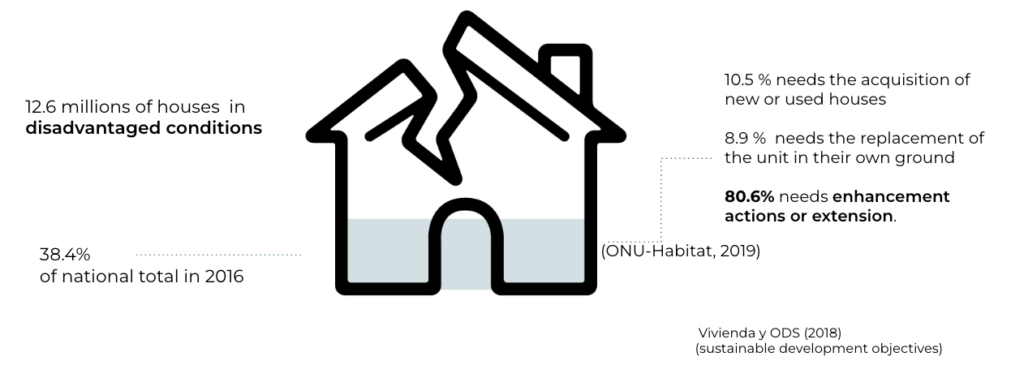
There are more people that wants to improve their already existing homes, do to this factor we decided to transform existing spaces.
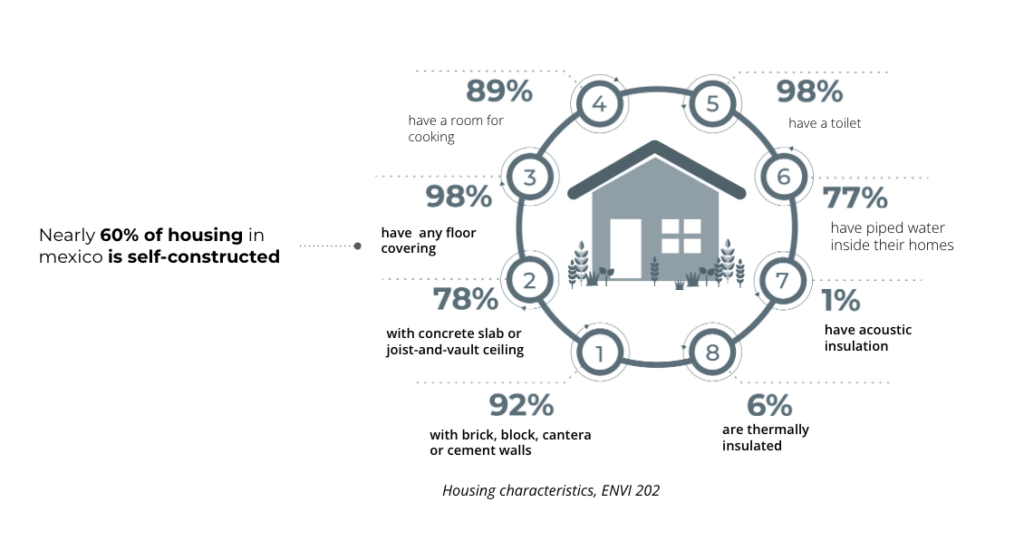
By acknowledging all the information above we started thinking…
How can we transform an inadequate space into a healthy and affordable one?
We did an analysis of the different types of houses, which are not visually similar.
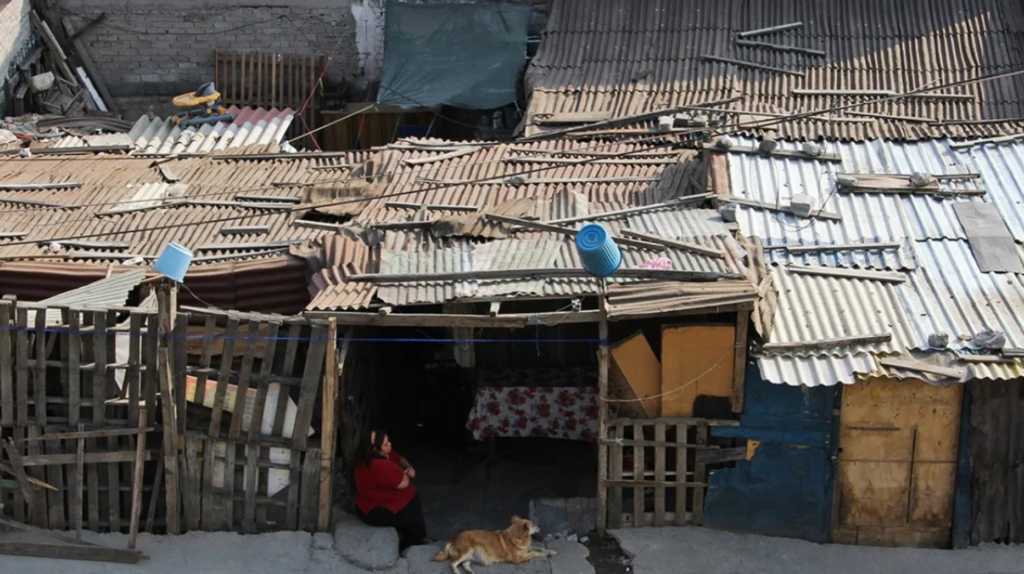

However, they share several characteristics such as dimensions, roofs with waste materials and the fact that the construction of these houses is progressive so they can go a long time without a wall, roof, and there are many temporary elements for the possible growth, although this may take years to be carried out.
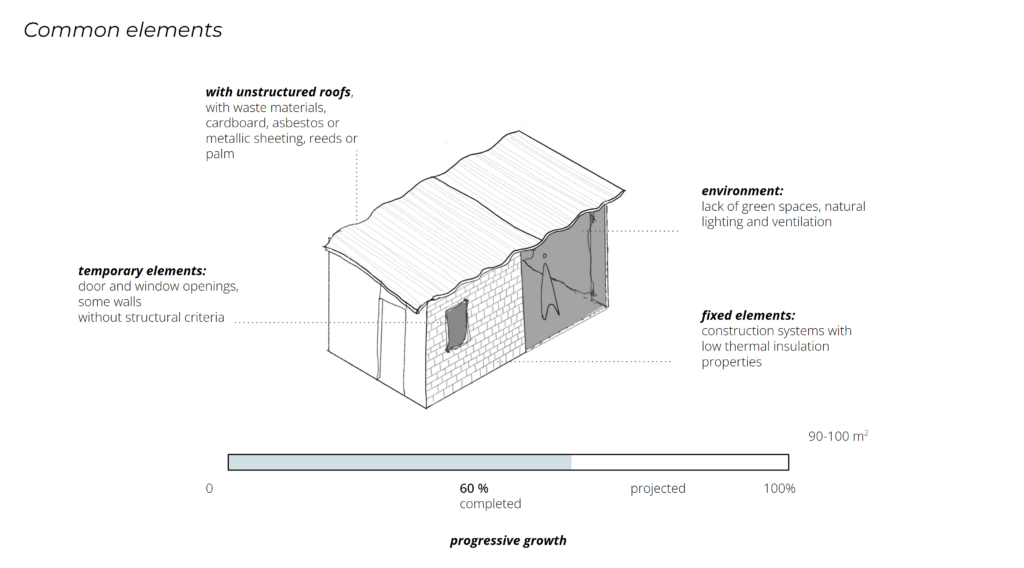
When analyzing these problems, we sought to turn them into opportunities, suggesting what our solution could be and integrating them into a single element.
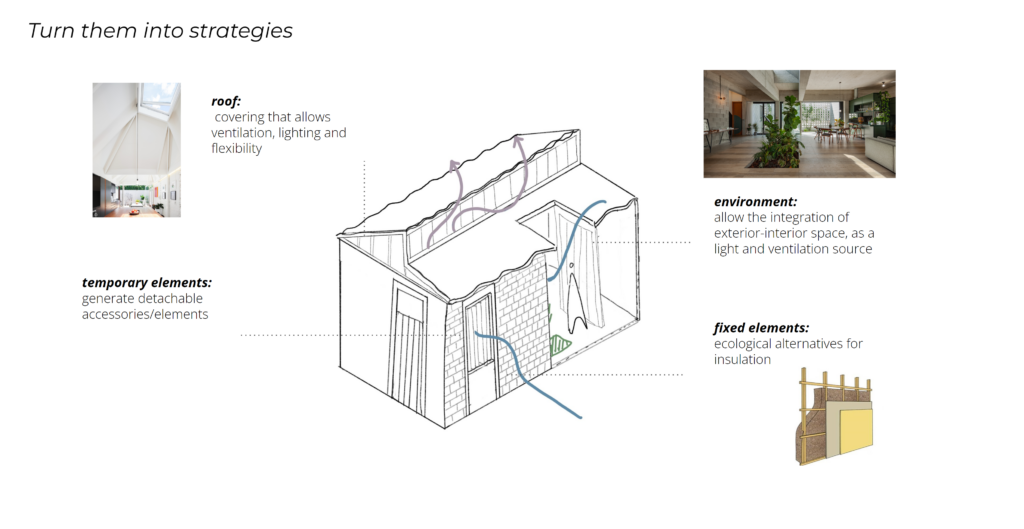
Revita Roof
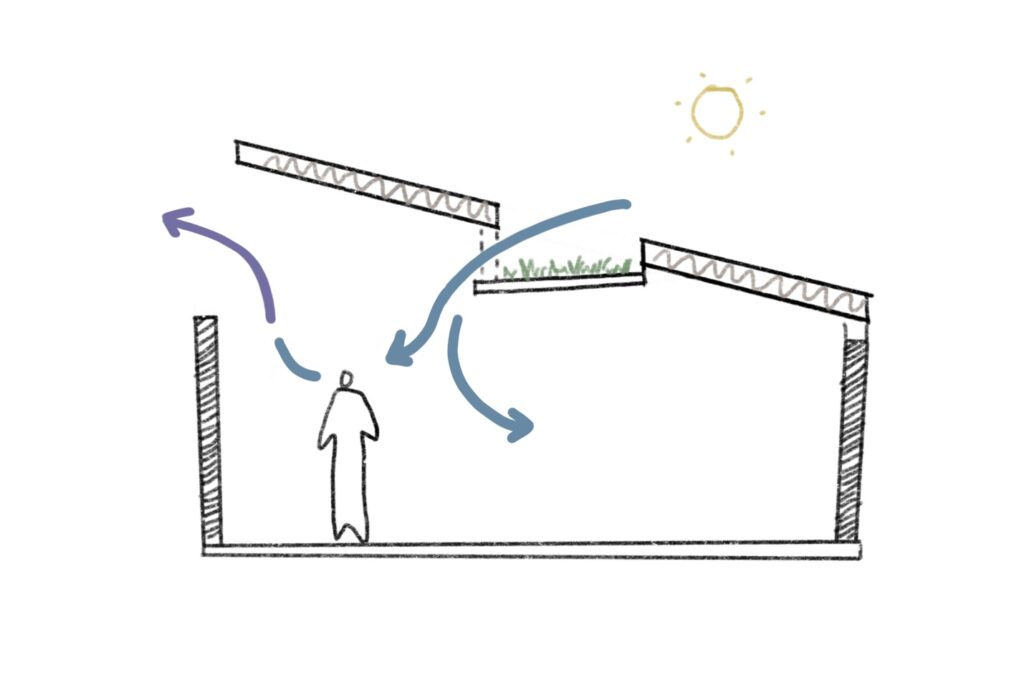
the integration of the challenges converted to a solution

The initial concept began with a drawing, which preserves 3 elements or axes which were concerns that we had from the beginning and that would be essential to propose a solution and the development of the final design.
Source of natural light and ventilation
Insulation alternative
Assembly and disassembly

RevitaRoof is a 4×4 module which is scalable and adaptable in its dimensions. Its design is intended to be easy to assemble for self-construction, by means of joints.
It has 2 openings to allow cross ventilation, one of them is located in the middle, this means that even if there are adjoining on all sides of the house, it will still have ventilation and lighting.
It was considered 4×4 because in our analysis most of the vulnerable houses measured 4-5 m in front and 12-15 m in length, or in some cases double the front. And the use of a module allowed different possibilities depending on the orientation, prevailing winds or particular characteristics of the house.
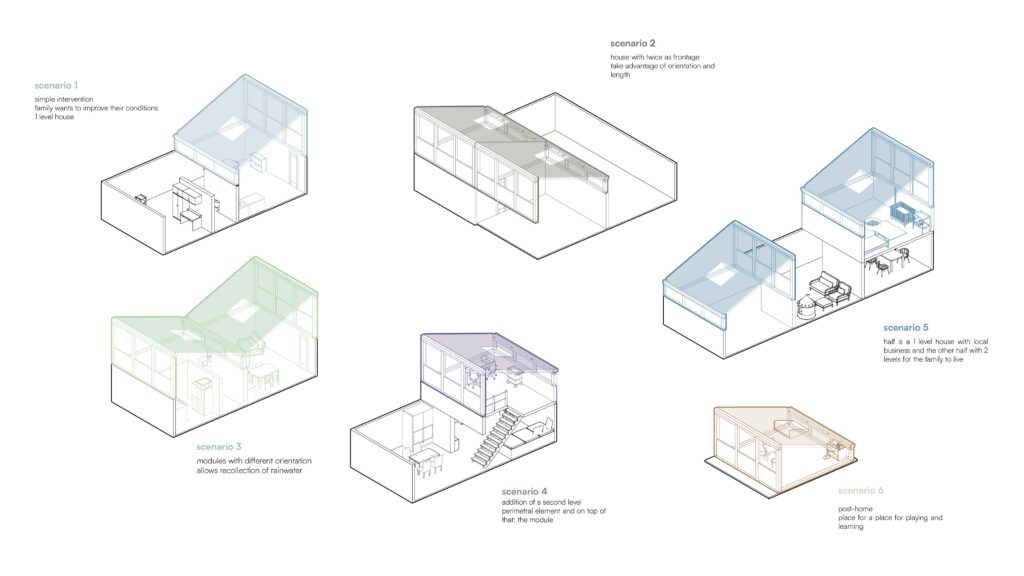
Applying it to a real case
The team found a house in the central region area of Mexico, especifically in Puebla, that meets several of the factors that were mentioned, so we decided to implement our solution to observe the scope and how it improves the interior space.
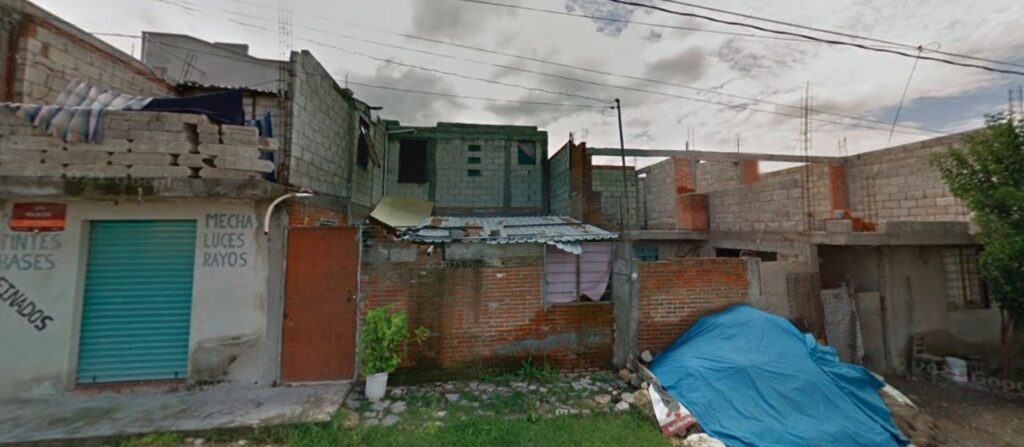
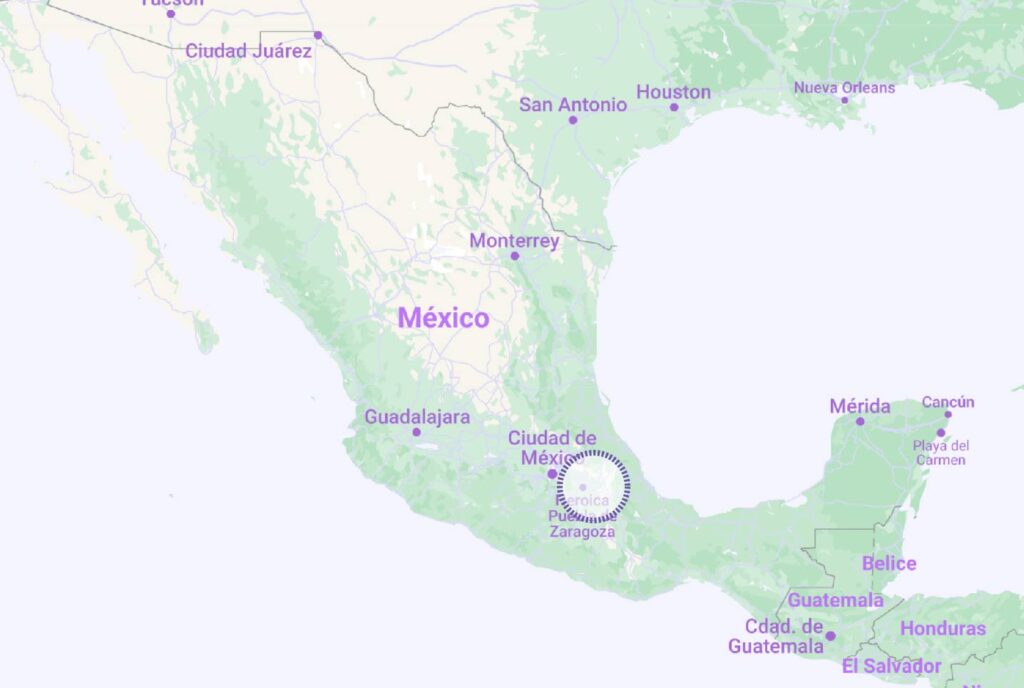
Thanks to the dedicated software for the analysis of solar radiation and hours of incidence of the sun in the project.
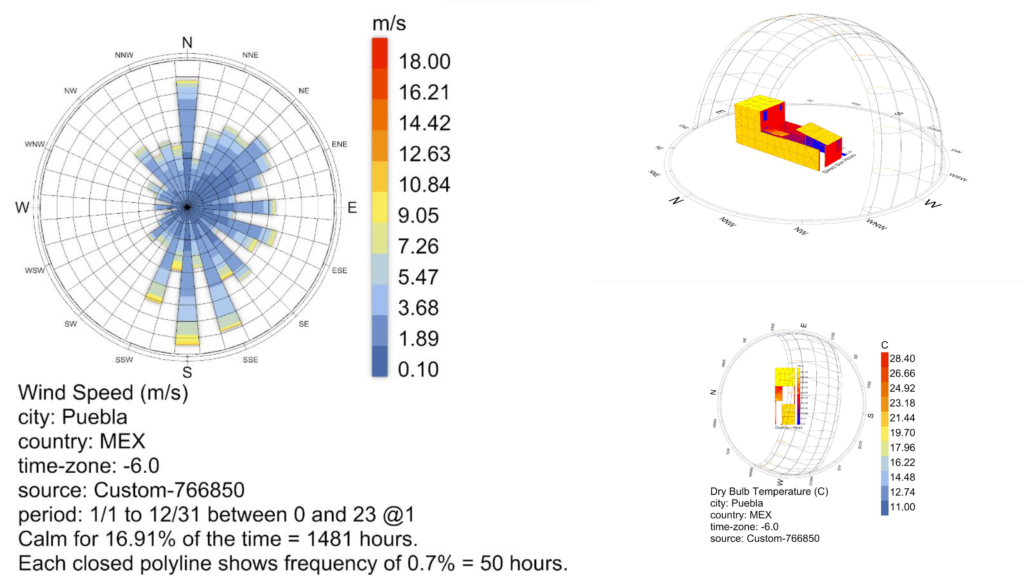
We can compare that the current solution of housing is very unhealthy for both environment and house owners with very little ventilation and hours of solar radiation to make this building comfortable.

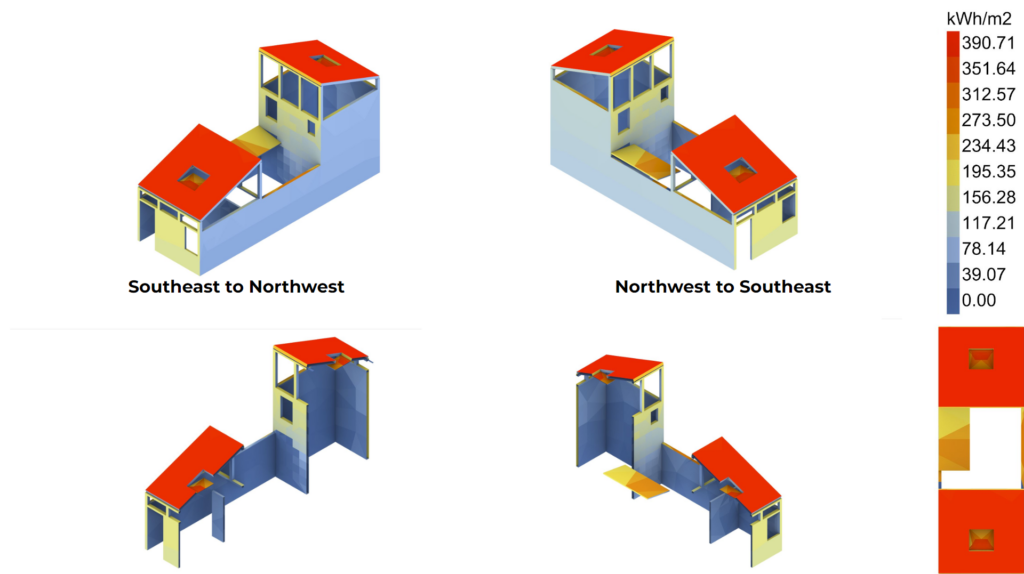
Due to this, the energy consumption of the house is very high, affecting the economy of the house owners and contamination by electrical energy.Our proposal shows that with an implementation of a better roof with materials suitable for insulating and providing better comfort to the home, drastically changes the way of using the building .
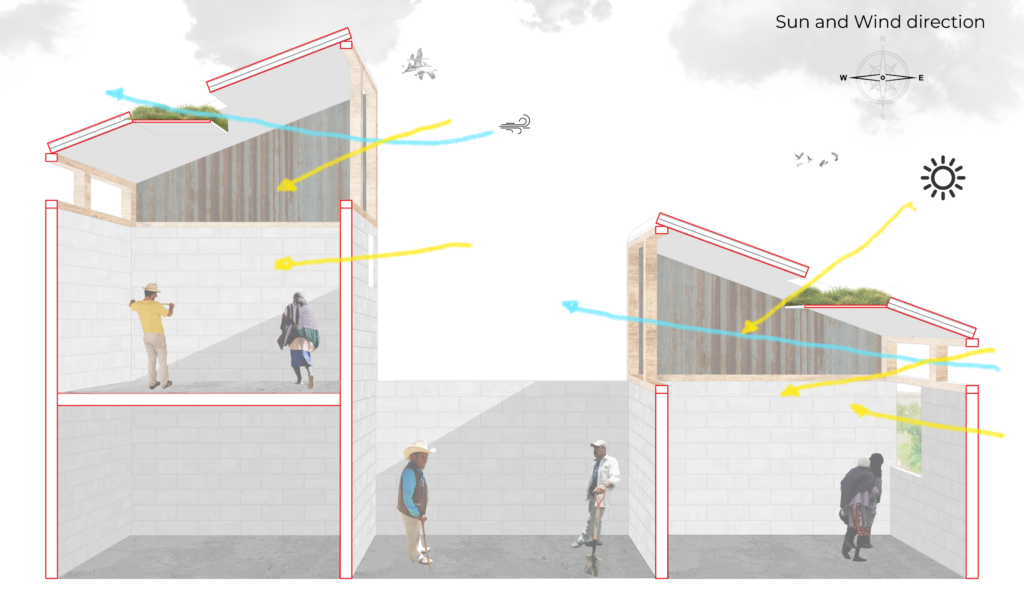
Is it really affordable?
A concrete slab, which is commonly used in housing construction in Mexico, has a cost of $687 mxn per square meter, taking into consideration the surface of our module that is 16 m², the total cost would be $10,992 mxn or $550 usd. Knowing that the approach is self-construction, the materials of the module must be economical in order to be feasible, therefore the following comparison was made:
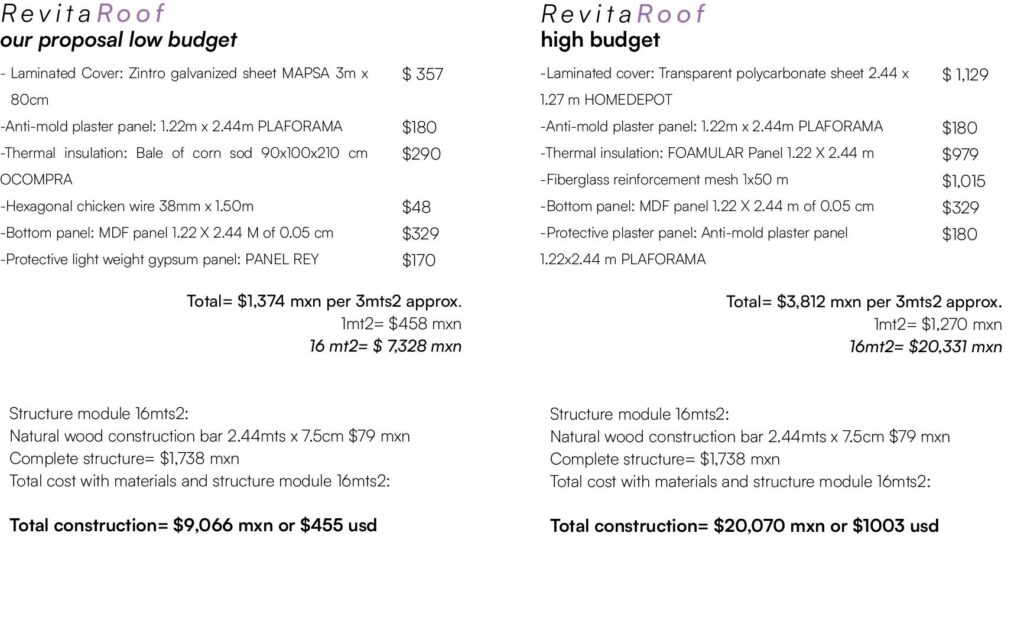
With the comparison, the results show our low budget proposal is in fact affordable and it is 17.52% cheaper than a typical concrete slab.
This represent a huge saving in people’s economy and in long-term energy consumption costs due to the characteristics of the module, which also allows for freedom or adaptability in the choice of materials in relation to the budget and context.
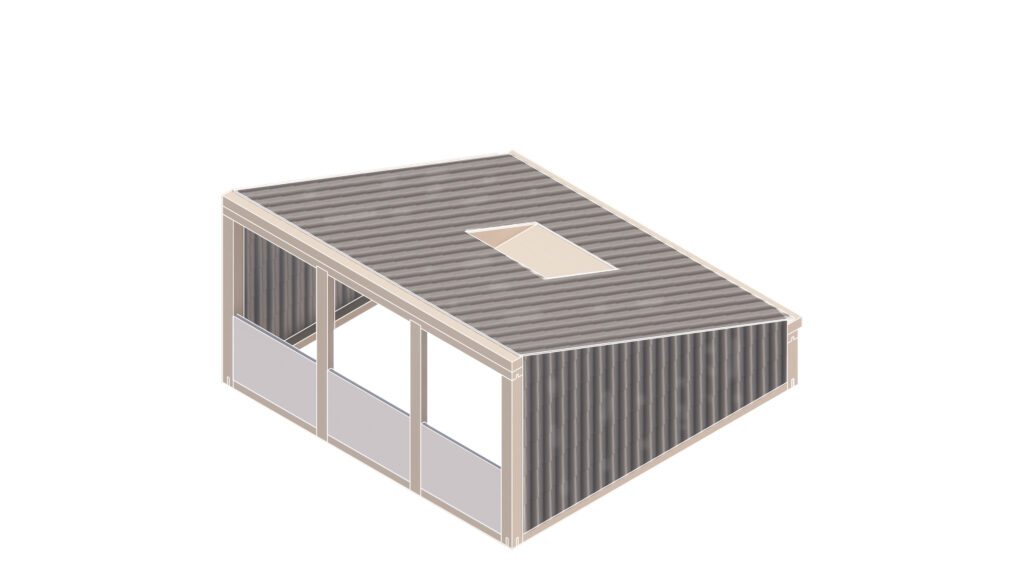
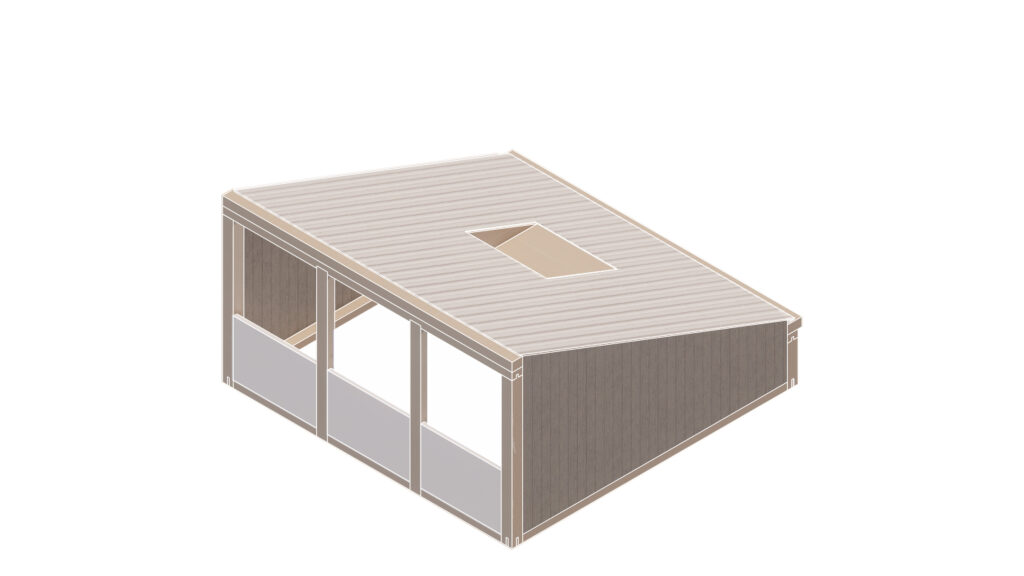
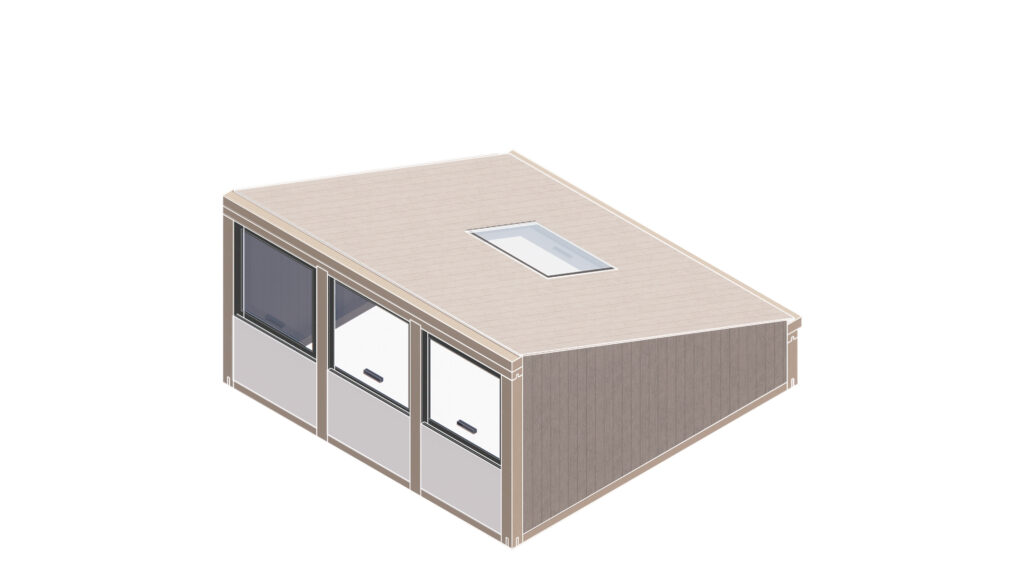
$ ———————————————$$————————————————$$$
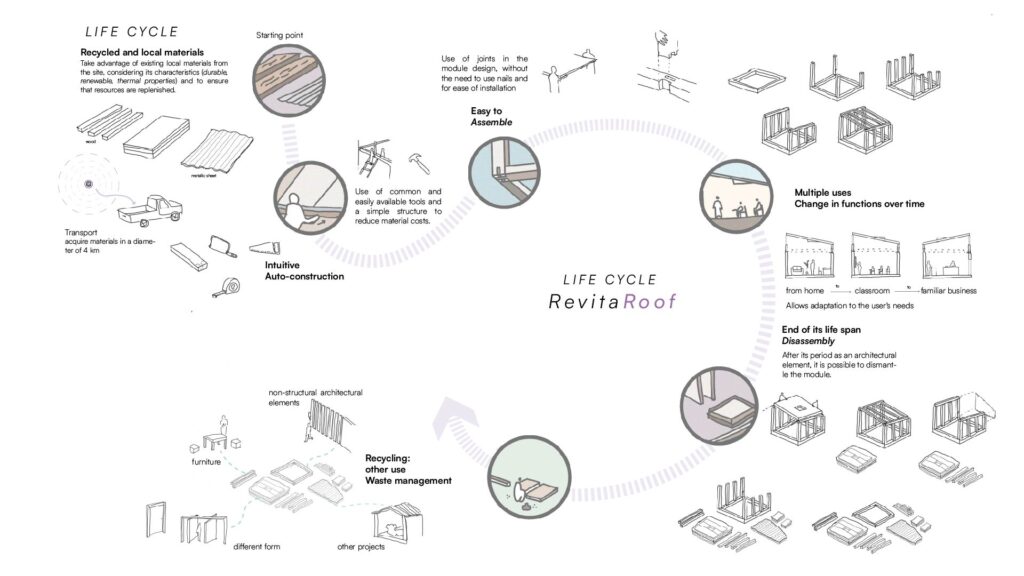
What is next?
We believe empowering communities to build and manage their own homes is critical. This not only gives them a safe roof, but also encourages community involvement and local job creation, as well as the flexibility to upgrade their home at their own pace.
That is one of the reasons we would like to continue researching for more ecological and local materials, and the next step would be giving technical assistance through a manual for autoconstruction and that government housing programs can help by funding the solution.
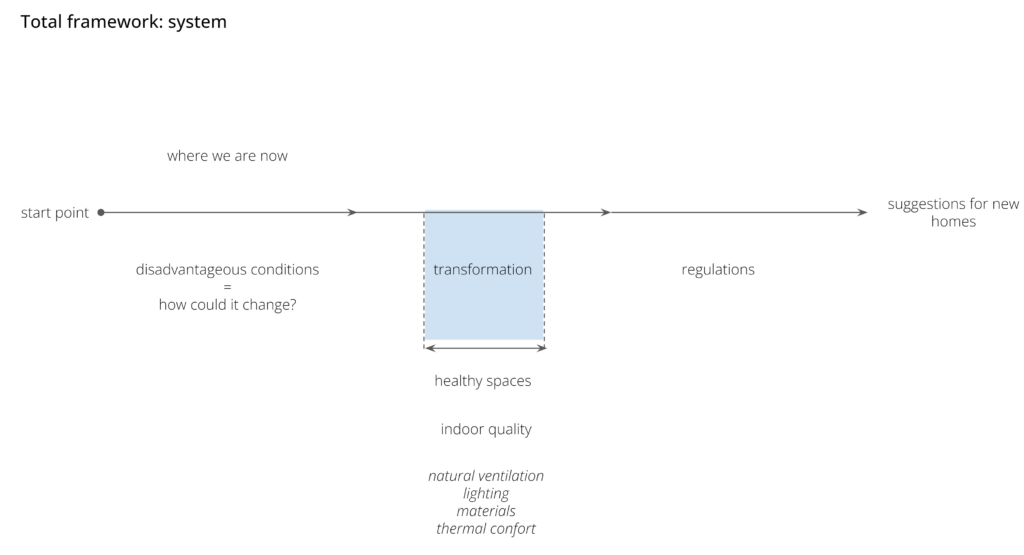
There are so many things to do for a sustainable future, we focus on transformation but there are many steps after.
Is our responsability to be part of the change, it time to
TRANSFORM FOR
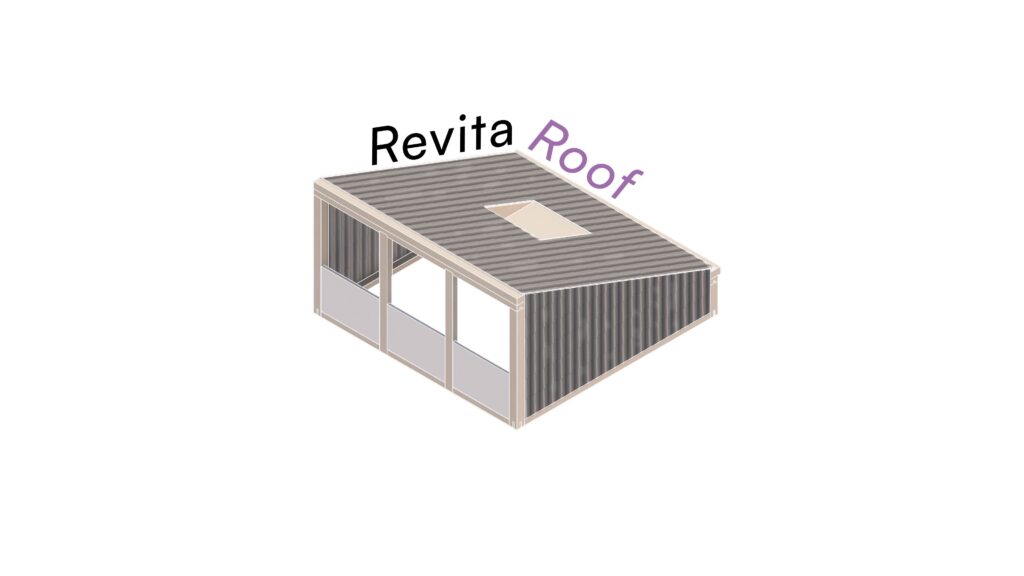
Terravida Team / Mexico

Ilse Sabrina Cancino | M. Architecture and Urban design. Tec de Monterrey, 7th trimester. [email protected]

Astrid García Víctory | Architecture. Tec de Monterrey, 9th semester [email protected]
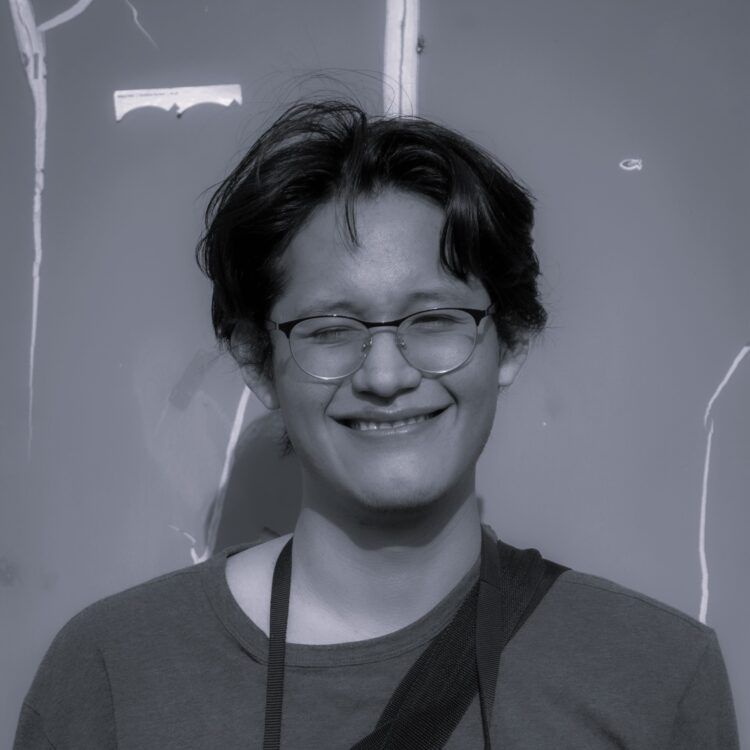
Raúl Fernando Gómez Ruíz | Architecture. Tec de Monterrey, 9th semester [email protected]
